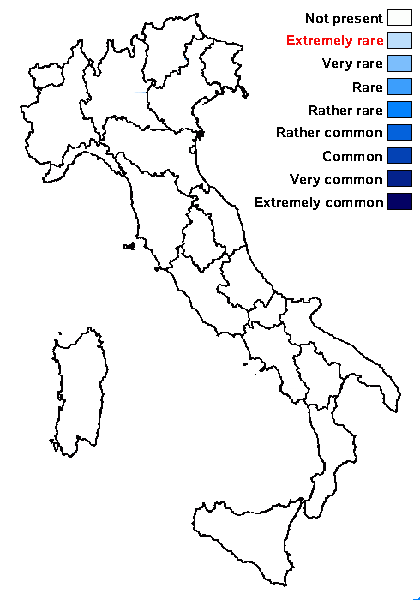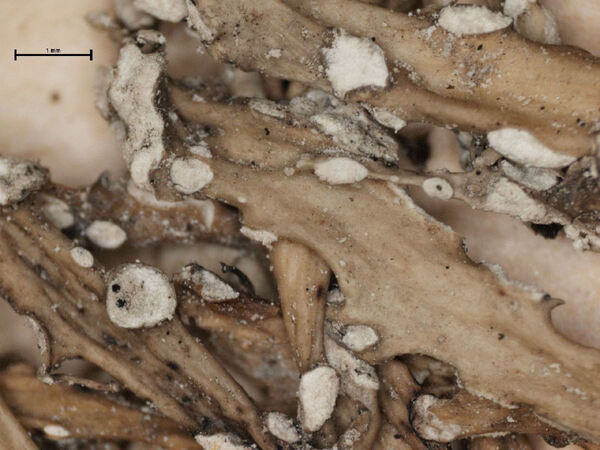Arthonia farinacea (H. Olivier) R. Sant.
Svensk Not. Tidskr., 54, 4: 501, 1960.. Basionym: Melaspilea farinacea H. Olivier - Bull. Acad. Intern. Géogr. Bot., 16: 195, 1906.
Synonyms:
Distribution:
Description: Thallus inapparent, not lichenized, developing inside the soralia of R. farinacea and related species. Apothecia arthonioid, emarginate, black, epruinose, with a rough surface, more or less round, convex, 0.2-0.3 mm across. Proper exciple not developed; epithecium dark brown, 10-20 µm high; hymenium colourless, 30-35 µm high, I+ reddish, K/I+ blue; paraphysoids branched and anastomosing, c. 1 µm thick, the apical cells up to 4 µm wide, with a dark cap; hypothecium brown, 40-60 µm high. Asci 8-spored, broadly clavate, semi-fissitunicate, with a large apical dome, a distinct ocular chamber, and a K/I+ blue ring-structure, Arthonia-type, 24-28 x 12-14 µm. Ascospores (1-)2-septate, hyaline, narrowly ellipsoid, (10-)12-16 x (2.5-)3.5-4.5 µm, without an epispore. Photobiont absent. Spot tests: thallus K-, C-, KC-, P-. Chemistry: without lichen substances. Note: a lichenicolous fungus developing on the soralia of Ramalina farinacea. To be looked for in Italy.
Growth form: Lichenicolous fungus
Substrata: bark
Reproductive strategy: mainly sexual
paras Ramalina farinacea

Predictive model
Growth form: Lichenicolous fungus
Substrata: bark
Reproductive strategy: mainly sexual
paras Ramalina farinacea

Predictive model
 INDEX FUNGORUM
INDEX FUNGORUM
 GBIF
GBIF



